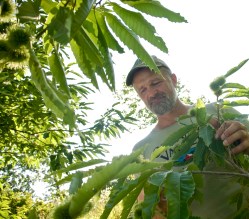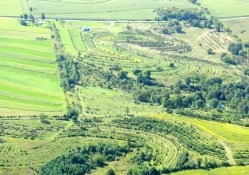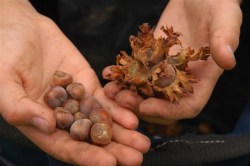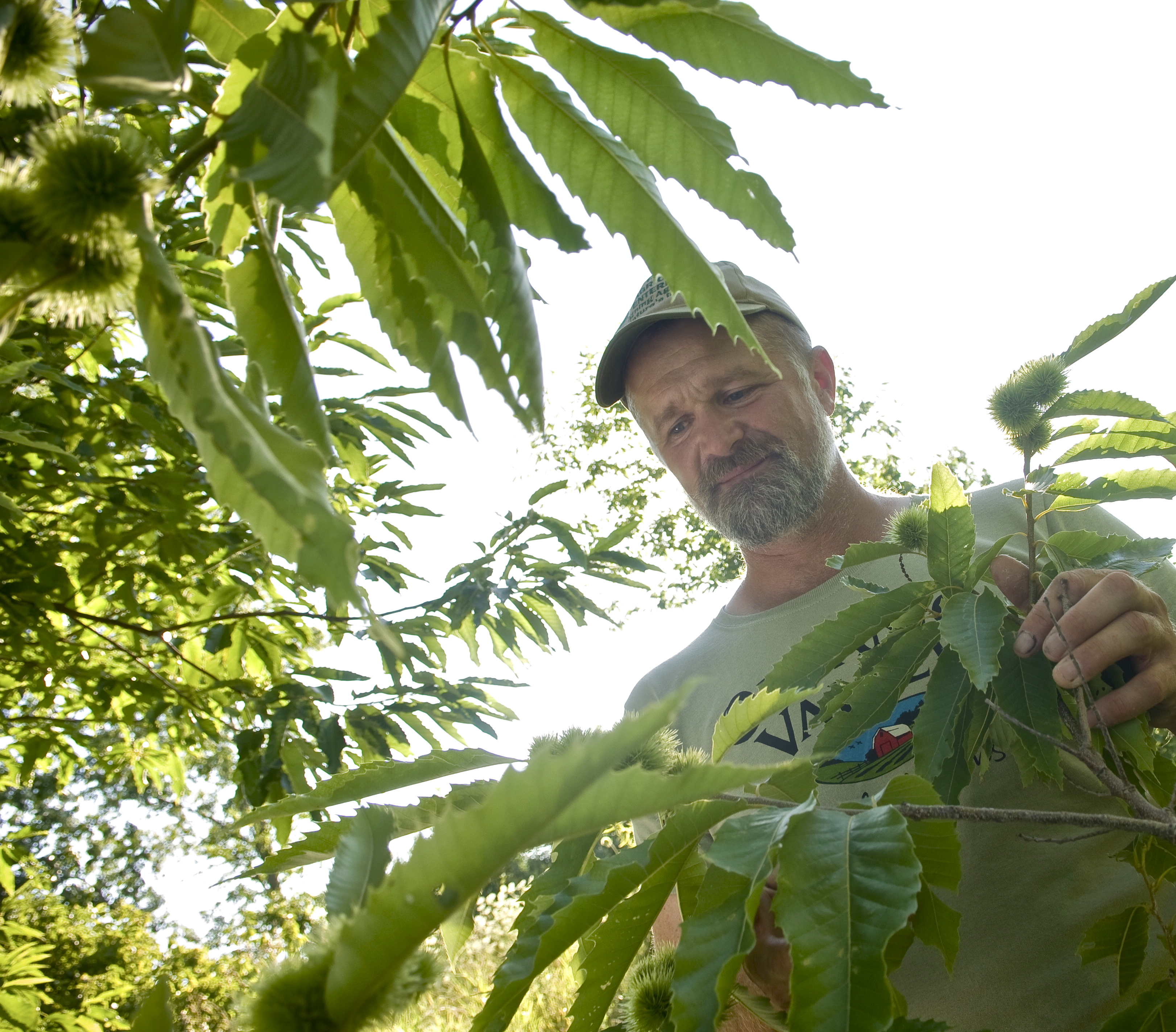
Erik Shepard Farmer Mark Shepard sees perennials such as chestnuts and apples as a way to diversify his crops and protect the soil.
“Invest in the millennium. Plant sequoias,” said farmer and author Wendell Berry.
Or, if you’re Mark Shepard, plant chestnuts. For Shepard, the owner of New Forest Farm and a farming consultant, the long-lived perennial trees are a central feature in the ideal farm landscape. Annuals — i.e. corn, soybeans, and many other vegetables that have to be planted and harvested every year — are labor-intensive and come with steep environmental costs such as erosion, soil degradation, and nutrient runoff. So permaculturists like Shepard see planting fruit and nut trees and other perennials — which only need to be planted once, and then, once mature, continue to produce year after year — as a key to sustainable food systems. His 106-acre farm in southwestern Wisconsin is filled with hazelnuts, chestnuts, pine nuts, currants, berries, apples, and much more.
Shepard calls his approach “restoration agriculture” (that’s also the name of his recently published book), and his hope is to mimic nature as much as possible to produce high-quality crops while restoring the health and fertility of the land.
“There are two problems with agriculture — even organic agriculture,” said Shepard recently on the phone. “You are either trying to keep something alive that wants to die, or you are trying to kill something that wants to stay alive.”
Using a method he fondly calls “STUN” — sheer, total, utter neglect — Shepard propagates varieties of fruit and nut trees that produce edibles early and often, and continue to thrive in an agriculture system that, once planted, mostly gets ignored until it’s time to harvest. If the plants can’t naturally stand up against the vagaries of disease, pests, and weather, Shepard yanks them out. The resilient ones are bred and planted.
Instead of endless rows of industrially managed corn and soybeans, Shepard utilizes a permaculture technique known as the keyline system to create a series of berms and swales — glorified drain ditches, really — to capture and retain rainwater. From above, the miles of swales feeding hundreds of thousands of thirsty trees and other perennial crops look like mythic crop circles.

The berms and swales on Shepard’s farm capture and retain rain water, and look like crop circles from above.
Agroforestry — a broad term to describe ways in which forests and forest management are combined with agriculture — is key in understanding Shepard’s system.
“The trees are the producers of the staple crops,” says Shepard. “Chestnuts are nutritionally equivalent to brown rice and similar to corn. Hazelnuts have three times the oil-per-kernel weight and a similar protein profile [as] soybeans. Plus we have the nutshells, which can be burned in a pellet stove or gasified to generate electricity.”
Shepard uses the oak savannah ecosystem — which covered much of the Midwest prior to European settlement — as an ecological model for his farm. Beside larger fruit and nut trees, like apple, mulberry, and pine nut, he grows shrubs like nanking cherry and hazelnut. Berry patches border the forest while other edibles — asparagus, winter squash, or green peppers — fill in the alleys between each row of trees in an agroforestry practice that’s referred to as “alley cropping.”
“We used to grow all kinds of annual produce but we are doing less and less of that now since our woody crops [fruit and nut perennials] started producing. When we first began, we were relying on the alley crops for cash flow but [we’re] now moving more toward grazing,” says Shepard.

Multi-species grazing on silvopasture — the intentional combination of livestock, forage, and trees on grass — now plays an essential part in the operation. Cattle and pigs eat the grass under the trees as well as whatever fruits and nuts that are not harvested for market sales or the on-farm cidery where apples and other fruits are pressed, fermented, and sold as hard cider. Because the livestock, nuts, and fruits are integrated into the same plot, they complement each other, much like the parts of a forest do, rather than competing for space, nutrients, water, etc.
While New Forest Farm is still trying to perfect its system, Shepard believes the farm can support up to 100 cattle, 200 hogs, 200 sheep, and thousands of turkeys and chickens. Raising animals in this way has the potential to revolutionize food systems that are dependent on feeding corn, soybeans, and other grain-based feeds to animals in confinement.
“We’ve generated numbers that show our system is capable of out-yielding corn by 30 percent on calories per acre,” says Shepard. “And as far as nutrition per acre, it’s off the charts. Then throw in the fact that the whole system is perennial — we don’t have any more planting costs, maintenance costs are minimal, no pest or disease control, no [fertilizer] inputs.”
As animal feed costs are rising because of the record droughts in the Midwest, Shepard stands to do really well raising livestock this way. He gives his large animals a little grain with vitamin supplements (his steer gets only three cups of grain a day, whereas conventionally raised steers need as much as 25 pounds of grain feed a day). Shepard plans to quadruple the number of animals on his farm next year.

Erik ShepardThe animals on Shepard’s farm graze the alleys between the trees and shrubs.
The idea, eventually, is to have cattle, chickens, hogs, sheep, and turkeys in a leader-follower system — all of the animals will be kept in small paddocks and moved frequently to aggressively trample-graze the alleys between trees and shrubs.
Due to this year’s drought, Shepard’s apples were nonexistent and the chestnuts and hazelnuts were way down. But the farm has a large variety of crops that produce at different times and thrive in multiple climatic conditions. He believes this approach will be crucial for farmers facing the unpredictable, potentially destructive weather of the future. “This summer was the driest on record in our part of Wisconsin and we had the finest cattle and hogs we’ve ever had,” he says.



